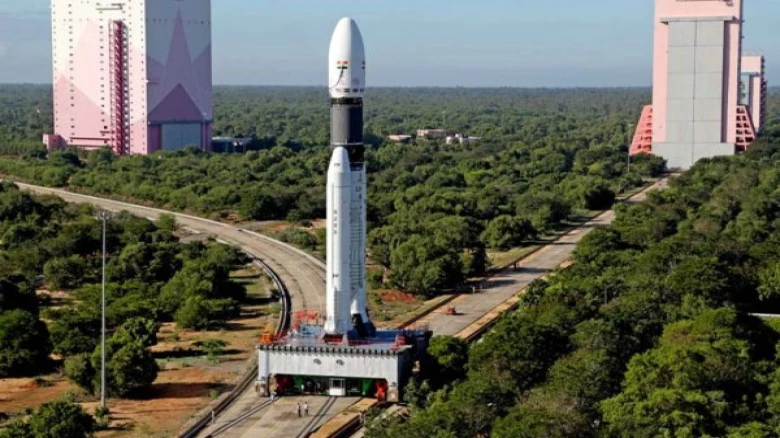ISRO and NASA collaborated in 2014 to develop the 2,800-kilogram satellite. ISRO handed its S-Band SAR payload developed in India to NASA...
Digital Desk: An earth-observation satellite constructed jointly by NASA and ISRO that will aid in the study of Earth's land and ice surfaces in greater detail is slated to be transported to India later this month for a September launch.
ISRO Chairman S Somanath paid a visit to NASA's Jet Propulsion Laboratory (JPL) in California on Friday to supervise the final electrical testing of the NASA-ISRO Synthetic Aperture Radar (NISAR) satellite before it is transported to India.
"This mission will be a powerful demonstration of radar's capacity as a science tool, allowing us to investigate Earth's dynamic land and ice surfaces in greater detail than ever before," Somanath said at the formal send-off event, which was attended by leading scientists from both space agencies.
The SUV-sized payload will be loaded into a customized cargo container later this month for a 14,000-kilometer voyage to the U R Rao Satellite Centre in Bengaluru.
In 2014, ISRO and NASA collaborated to develop the 2,800-kilogram satellite. ISRO handed its S-Band SAR payload developed in India to NASA in March 2021 for integration with JPL's L-Band payload.
"This marks an important milestone in our common effort to better comprehend planet Earth and our changing climate. NISAR will offer crucial information on the Earth's crust, ice sheets, and ecosystems, according to JPL Director Laurie Leshin.
Somanath stated that the NISAR spacecraft will be incorporated onto the satellite bus at the U R Rao Satellite Centre in preparation for launch next year.
"This is one of the most intricate satellites. "The elements produced by JPL are fantastic," Somanath remarked.
The occasion at JPL began with the customary breaking of coconuts in front of a scale replica of the satellite by NASA and ISRO NISAR project chiefs Phil Barela and C V Shrikant, respectively.
The JPL Director also gave the ISRO group a jar of JPL fortunate peanuts to snack on during the satellite launch.
NISAR will collect radar data using a drum-shaped reflector antenna measuring nearly 12 meters in diameter. It will employ a signal-processing technique known as interferometric synthetic aperture radar, or InSAR, to detect changes in the Earth's land and ice surfaces to the thousandth of an inch.
The satellite will aid scientists in detecting slow-moving abnormalities in the land surface that can presage earthquakes, landslides, and volcanic eruptions.
Data on such movements could aid communities in preparing for natural disasters like the Joshimath land collapse.
Melting sea ice and ice sheets measurements will increase knowledge of the pace and implications of climate change, particularly sea level rise.
During its three-year primary mission, the satellite will observe nearly the entire world every 12 days, day and night, in all weather situations.


Leave A Comment